Extra virgin olive oil is a very traditional oil with thousands of years of history.
We can also read about it being a healthy choice in the media, but what exactly is it?
And is it good for you?
This article takes an evidence-based look at the complete nutrition profile, fat composition, and health effects of extra virgin olive oil.
We also look at potential negative issues, how to find good extra virgin olive oil, and how to use it.
Table of contents
What Is Extra Virgin Olive Oil?
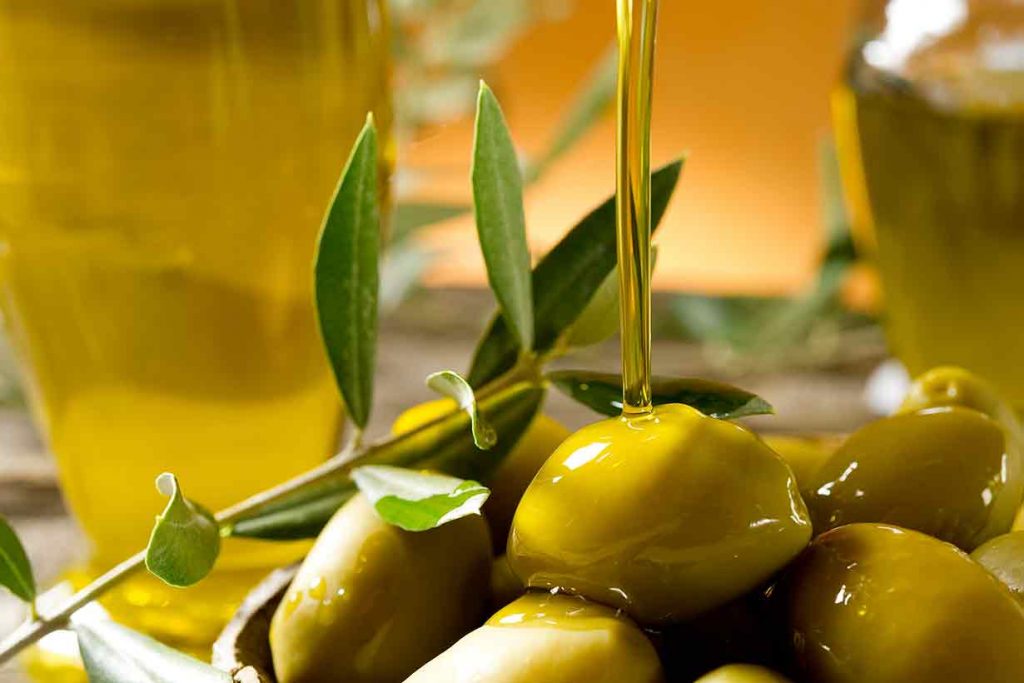
Olive oil is produced from olives, which are the fruit of a tree called Olea Europaea (common olive tree) (1).
Most modern extra virgin olive oil is made by centrifugation rather than cold-pressing due to the lower production costs. Centrifugation is a process that separates the oil from the rest of the olive fruit through the force generated by spinning at extremely high speeds (2).
The oil contains a range of healthy fats, primarily a monounsaturated fatty acid called oleic acid. Oleic acid represents approximately 55-83% of the fatty acids present in olive oil (3).
Olive oil also contains high levels of phenolic compounds (polyphenols) and enjoys popularity as a salad dressing and for cooking (4).
Extra virgin olive oil has received significant recent interest, and studies on the oil have generally shown positive health effects (5, 6).
Most of the world’s extra virgin olive oil comes from the Mediterranean region. Based on data tracking virgin olive oil production between 1961 and 2019, the largest producers are as follows: (7):
- Spain
- Greece
- Italy
- Tunisia
- Turkey
- Morocco
- Syria
- Portugal
- Algeria
- Lebanon
The United States was the 19th largest producer.
Sometimes people refer to extra virgin olive oil by the acronym of EVOO.
Extra virgin olive oil is a key part of the ‘Mediterranean diet’ and the cuisine of Mediterranean countries such as Greece, Italy, and Spain.
A Brief History
Extra virgin olive oil has been around for thousands of years.
While numerous records of the oil predate biblical times, the earliest origins go back to the year 6000 BC. For instance, archaeologists found the remains of several clay vessels containing olive oil dating back to this time.
What is the Difference Between Extra Virgin and Other Olive Oils?
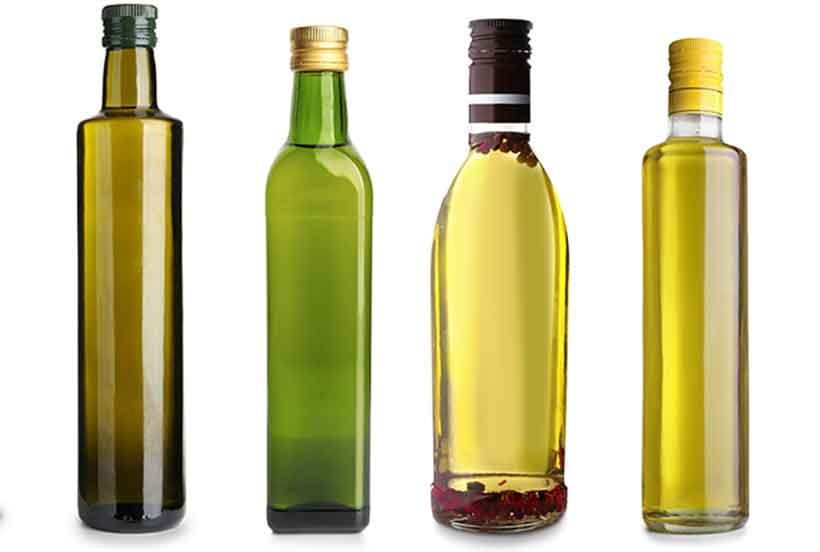
Firstly, there are several key differences between extra virgin olive oil and more refined varieties, such as olive pomace oil.
Here is a quick summary;
- The production of extra virgin olive oil (highest quality and lowest free fatty acid content) and virgin olive oil relies on centrifugation or cold-pressing in rarer and more traditional cases. In contrast, pomace olive oils use an oil extraction process that uses a solvent (typically hexane). This solvent separates the remaining oil from the leftover olive pulp after virgin olive oil production (8, 9).
- Extra virgin olive oils contain many polyphenolic compounds, but refined olive oils lose (most of) these during manufacture (10).
- Compared to refined olive oils, EVOO has a much stronger flavor and a darker color. Refined oils are very light.
- Refined oils are almost tasteless, but a high-quality extra virgin olive oil should cause a peppery burning feeling in the back of the throat. This is due to oleocanthal, a phenolic compound with anti-inflammatory properties (11, 12).
- Refined olive oils (and most other cooking oils) are cheaper than extra virgin olive oil.
See this guide to the best extra virgin olive oil brands for more information.
Nutrition Facts
The following table shows the basic nutritional properties of olive oil per tablespoon (14g) serving.
The source of all nutritional data is the USDA’s FoodData Central Database. Daily values have been calculated using USDA data and the FDA’s recommended daily deals (13, 14).
| Name | Amount | % Daily Value |
|---|---|---|
| Calories | 126 kcal | |
| Carbohydrates | 0 g | 0% DV |
| Fiber | 0 g | 0% DV |
| Sugars | 0 g | |
| Fat | 14.0 g | 17.9% DV |
| Saturated | 2.17 g | 10.9% DV |
| Monounsaturated | 9.58 g | |
| Polyunsaturated | 1.33 g | |
| Omega-3 | 0.09 g | |
| Omega-6 | 1.24 g | |
| Protein | 0 g | 0% DV |
Firstly, as an isolated fat, extra virgin olive oil does not provide any carbohydrates or protein.
Regarding the fatty acid profile, the oil mainly supplies monounsaturated fat, followed by saturated fatty acids and polyunsaturated fat.
The predominant fatty acid is monounsaturated oleic acid.
Vitamins and Minerals
- Vitamin E: 2.93 mg (19.5% DV)
- Vitamin K: 3.64 mcg (3% DV)
Since it is a pure source of fat, extra virgin olive oil does not contain a wide range of vitamins and minerals. However, it contains small amounts of fat-soluble vitamins E and K.
Polyphenols and Bioactive Compounds
Among all food, extra virgin olive oil contains one of the broadest ranges of polyphenolic compounds. This range includes various flavonoids, phenolic acids, lignans, and tyrosols (15, 16).
Extra virgin olive oil offers more polyphenols than refined vegetable oils do.
These polyphenols are part of why the oil has good oxidative stability when exposed to heat, making it a good cooking oil choice (17, 18, 19).
Two of the most interesting compounds in EVOO are oleuropein and oleocanthal, two polyphenols with purported anti-inflammatory properties (20, 21).
Fatty Acid Composition
For anyone wishing to know the exact composition of fatty acids, here is the data per 100 grams of extra virgin olive oil (22):
Saturated Fatty Acids
- Myristic acid: 0.01 g
- Pentadecylic acid: 0.01 g
- Palmitic acid: 12.1 g
- Margaric acid: 0.08 g
- Stearic acid: 2.59 g
- Arachidic acid: 0.41 g
- Heneicosylic acid: 0.01 g
- Behenic acid: 0.12 g
- Lignoceric acid: 0.06 g
Monounsaturated Fatty Acids
- Palmitoleic acid: 1.03 g
- Oleic acid: 67.8 g
- Eicosanoic acid: 0.28 g
Polyunsaturated Fatty Acids
- Linoleic acid (omega-6): 8.4 g
- Linolenic acid (omega-3): 0.65 g
Potential Health Benefits of Extra Virgin Olive Oil
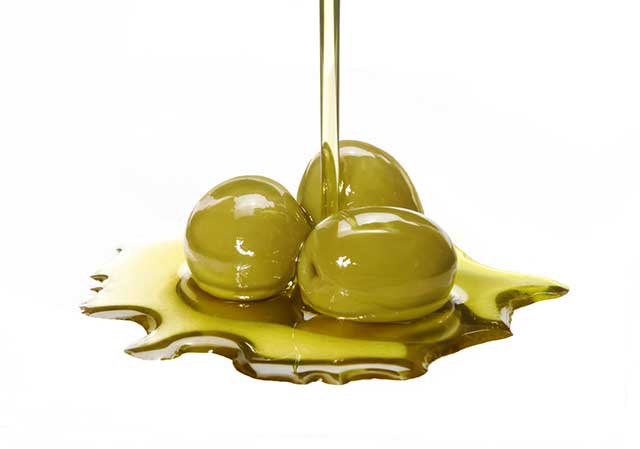
In nutrition, many nuances are involved when discussing the potential benefits and downsides of specific foods.
However, most of the research (and the media coverage) on extra virgin olive oil tends to be positive.
With this in mind, what does the research show?
Let’s look at some recent high-quality studies on extra virgin olive oil and its potential benefits.
1. Extra Virgin Olive Oil Has Good Oxidative Stability When Heated
It is easy to hear the question, “can you fry with olive oil?”
Over the years, there has been a widespread myth that olive oil is unsuitable for cooking and unstable at high heat. This has spread chiefly on blogs and social media.
However, such claims are far from accurate. The truth is that numerous studies show the opposite; extra virgin olive oil has excellent oxidative stability, which means it doesn’t easily break down during cooking (17, 18, 19).
In one study, extra virgin olive oil, refined olive oil, and vegetable oil were used for deep-frying for up to 27 hours to compare their oxidative stability. Extra virgin olive oil was more resistant to oxidation than refined olive oil and vegetable oil. The researchers concluded that “extra virgin olive oil is clearly resistant to deep frying conditions” (19).
If oil can stand up to deep frying conditions for over 24 hours with “minimal oxidation, “ it can certainly cope with a bit of pan-frying at home.
Furthermore, a recent study compared the heat stability of numerous common cooking oils (20).
What did the study show?
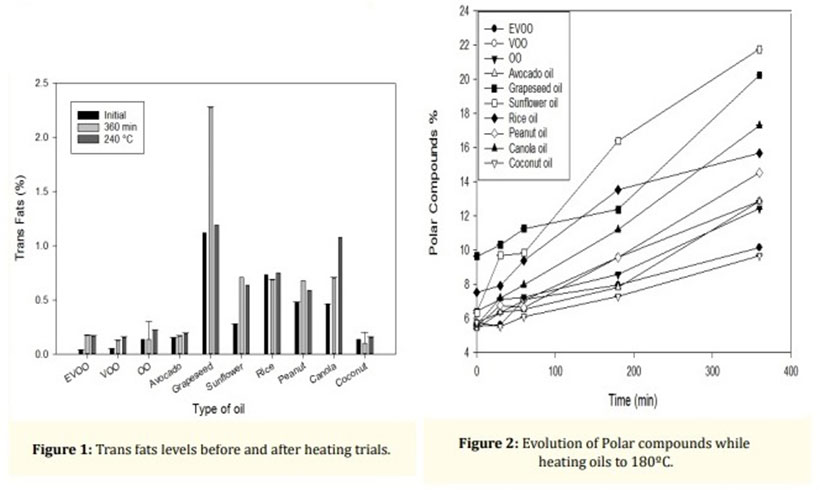
As shown in figure 1, researchers heated a range of cooking oils to a temperature of 240°C.
From left to right, these oils were extra virgin olive oil, virgin olive oil, olive oil, avocado oil, grapeseed oil, sunflower oil, rice oil, peanut oil, canola, and coconut oil.
Heating these cooking oils to a temperature of 240°C resulted in the formation of trans fats in each oil.
However, aside from coconut oil, extra virgin olive oil had a lower percentage of trans fat form than the other oils at 0.2% of the oil.
Figure 2 shows the number of polar compounds (oxidation products) created when the oils were continuously heated at 180°C for 6 hours.
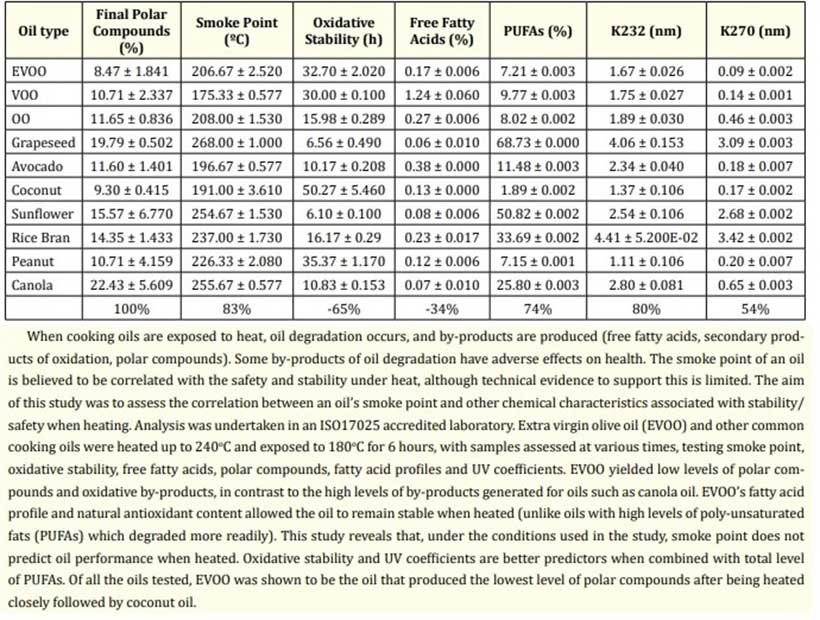
As we can see from the final results, extra virgin olive oil contained the fewest polar compounds after heating compared to any other oil.
2. Healthy Fats
One of the main positive points about extra virgin olive oil is its fatty profile.
As discussed earlier, the primary fatty acid found in olive oil is monounsaturated oleic acid.
A 2020 systematic review of intervention studies demonstrated that meals high in oleic acid reduced body mass, abdominal fat, and central obesity (20).
Another 2020 systematic review and meta-analysis of randomized controlled trials studied the impact of oleic acid supplementation on inflammatory markers (21).
Oleic acid had no impact on most inflammatory markers, but it did result in significant reductions of C-reaction protein (CRP), a primary marker of inflammation. Across the trials analyzed, oleic acid supplementation resulted in a mean 11% lower CRP.
3. Extra Virgin Olive Oil May Lower Oxidized LDL Cholesterol
Oxidized LDL cholesterol is a marker that, among several other markers, is a “predictor” for heart disease and cardiovascular events (22).
In other words, high circulating levels of oxidized LDL cholesterol are associated with an increased risk of heart disease.
On this note, a 2019 meta-analysis of thirty human intervention studies examined the metabolic effects of olive oil consumption (23).
Based on seven of these studies that measured oxidized LDL levels, olive oil consumption as part of a ‘Mediterranean diet’ reduced oxidized LDL compared to a ‘Western’ control diet. Additionally, olive oil (without being part of a Mediterranean diet) had a similar effect, but with a more gradual change.
A further 2019 systematic review and meta-analysis of thirteen randomized controlled trials examined whether the type of olive oil matters (24).
This study demonstrated that extra virgin olive oil reduces oxidized LDL-C more than refined olive oil. Additionally, high-polyphenol extra virgin olive oil had a more pronounced effect than low-polyphenol extra virgin olive oil. That said, the researchers noted that the strength of the evidence they found was only low to moderate.
4. Higher Olive Oil Consumption Is Associated With Lower Cardiovascular Risk and All-Cause Mortality
A 2014 systematic review and meta-analysis examined how olive oil intake is associated with all-cause mortality, cardiovascular events, and stroke (25).
Over thirty-two observational (cohort) studies involving 841,211 participants, the researchers found that the highest olive oil intakes were associated with a significantly reduced risk of all-cause mortality, cardiovascular mortality, cardiovascular events, and stroke.
Also, a 2022 systematic review and meta-analysis investigated the effect of olive oil consumption on cardiovascular disease, cancer, type 2 diabetes, and all-cause mortality (26).
This extensive review covered thirty-six studies involving a total of 806,203 participants. Each additional daily intake of 25 grams of olive oil was associated with a 16% lower risk of cardiovascular disease and an 11% reduced risk of all-cause mortality. There was no significant association between olive oil intake and cancer risk.
Furthermore, a 2022 dose-response meta-analysis found a linear, dose-response 4% lower risk for cardiovascular disease and all-cause mortality with each 5-gram daily increment of olive oil (27).
5. A Source of Oleocanthal
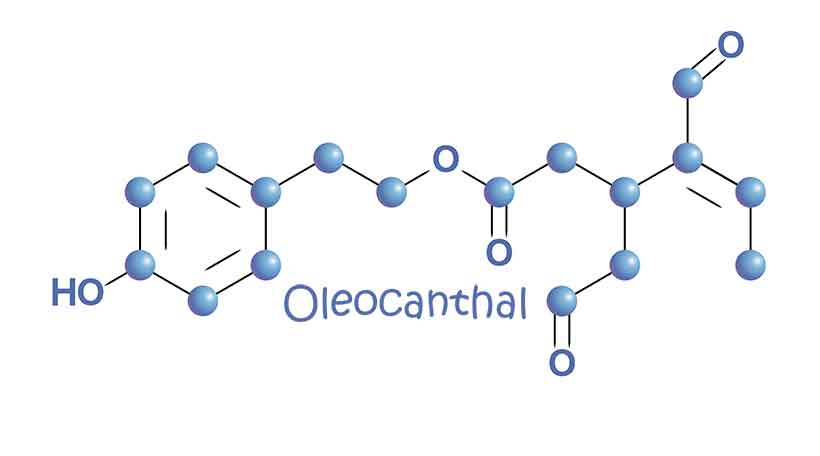
Oleocanthal is an interesting compound found in olive oil with potential health benefits.
Firstly, oleocanthal is a phenol that occurs in olive oil, and research suggests it has anti-inflammatory properties (12).
Anyone trying a good quality extra virgin olive oil in its cold state should notice a hot feeling in the back of their throat a few seconds after consumption. This taste is the oleocanthal, a peppery-tasting compound that shows an anti-inflammatory effect similar to ibuprofen in vitro studies (28, 29).
In vitro refers to tests done outside of the body, such as in test tubes.
At this point, oleocanthal is thought to have potential as a compound that may benefit human health. However, there is a relative lack of research on oleocanthal involving human participants at this point.
Research is ongoing, and the first clinical trial involving a high-oleocanthal extra virgin olive oil intervention recently took place (30). This pilot study aimed to examine if a high-oleocanthal extra virgin olive oil could impact markers related to chronic lymphocytic leukemia in patients with an early stage of the disease. Potentially beneficial effects were seen, but more extensive research through larger trials is necessary
6. Rich in Vitamin E
Not many foods in the modern diet provide high amounts of vitamin E.
The most significant providers of this essential vitamin are nuts, seeds, and plant oils.
On the positive side, extra virgin olive oil contains this vitamin in relatively large amounts.
As previously mentioned, a tablespoon serving of extra virgin olive oil provides 2.93 mcg of vitamin E, which is nearly 20% of the recommended daily value (13, 14).
Vitamin E functions as an antioxidant in the body and plays a role in strengthening the immune system and protecting cells against damage (31).
Is Olive Oil Fraud a Problem?
In the past, there have been serious issues with olive oil fraud.
These primarily involved companies passing off inferior olives oils as ‘extra virgin.’ However, on rarer occasions, completely different oils were used. For instance, some companies diluted olive oil with low-grade soybean oil and labeled the product with the ‘extra virgin olive oil’ name (32, 33).
Unfortunately, olive oil adulteration is still an issue, but you can read this comprehensive review of efforts taken to ensure its authenticity.
Where To Get Good Extra Virgin Olive Oil
Costco’s Kirkland brand has stringent quality assurance processes among the various brands and is reasonably priced, genuine extra virgin olive oil (34).
Some of the Kirkland range is also available to buy online (disclosure: affiliate link).
For other extra virgin olive oils, it’s a matter of researching and checking into the specific brand.
That said, here is a list of extra virgin olive oil brands that either provide full traceability for their olive oil products or are certified by a certification program that randomly tests the oil of member products.
How To Use
Extra virgin olive oil tastes excellent alongside balsamic vinegar and a touch of lemon juice.
This combination works well as a basic salad dressing and can also be spiced up with added herbs or spices.
In contrast to popular myth, extra virgin olive oil is also an excellent choice for pan-frying and stir-frying and imparts good flavor to food.
Potential Downsides
As with any food, there are some downsides to consider with extra virgin olive oil. Here is a summary:
- Extra virgin olive oil costs more than refined olive oil and most other cooking oils.
- While extremely rare, some documented cases of contact allergy to olive oil have been reported (35, 36).
Common Questions
As with any food, it is possible to over-consume olive oil. Since the oil contains significant amounts of fat and calories, it is easy to consume too much. A typical serving of olive oil is a tablespoon, which is approximately 14 grams.
It is difficult to say with certainty that any one source of fat is healthier than all the rest. For example, the overall research on olive oil is generally positive, but similar research exists for nuts and seeds too.
There are about 126 calories in a tablespoon serving of extra virgin olive oil (13).
Extra virgin olive oil provides the highest quality olive oil product. However, it is also possible to find extra virgin olive oils developed to have high polyphenol content. These products will be more expensive than budget oils.
The ideal place to store a bottle of extra virgin olive oil is a cool and dark place, away from heat and sunlight. This will help the oil to last longer while preserving its characteristics and not breaking down.
Final Thoughts
Extra virgin olive oil is popular for its taste and purported health benefits, particularly in the Mediterranean region.
The oil has excellent heat stability, contains a range of bioactive compounds that may confer health benefits, and has significant positive research behind it.
Extra virgin olive oil is among the best oil choices, both for health and culinary purposes.

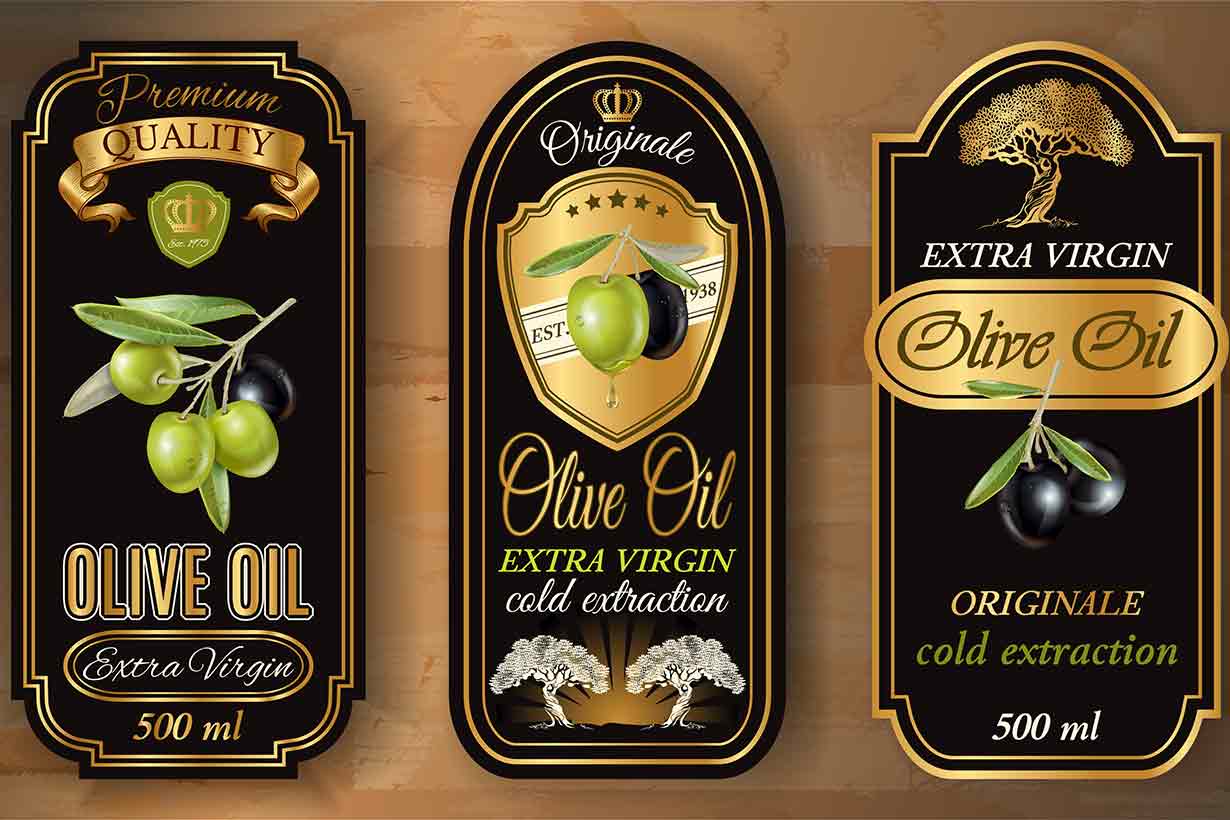

One of the best article for those whose health matters a lot
Thanks, Muhammad, glad that you got something from it!
Informative and impressive
Thanks, Naseem!
Glad that you found it useful.
Grat article. I’ve learnt a couple of things I didn´t know. Luckily, I live in the world’s biggest producer region of olive oil: Andalucia, Spain. You can see oceans of olive groves here. And, of course, we can buy the finest AOVE (EVOO) oil from small producers. The one you can’t buy at the supermarket. We use it daily, for cooking or for salad’s dressing. It’s our liquid gold.
Wow, lucky you!
Getting food from a small local producer is ideal and I’m sure it is a lot higher quality than the supermarket stuff.
I think you must have nice weather over there too…
Of course. But shortly will be quite hot.
We have the right weather for our beloved olive oil.
Thank you Michael for the pretty useful article, you enriched our information and raised our awareness.
Shalom Michael!!! Thank you for such a wonderful article giving people an introduction to and overview of EVOO, and clearing up some of the myths. We’d like to post some excerpts in our Newsletter and link back here to the full article with full credit to you and nurtritionadvance. You deserve a wide audience. Hope that’s okay with you!
Thanks, Shmuel! Sure, if you think your followers would enjoy the article then I would be happy for you to share it. No problem!
I was wondering how to tell when virgin olive oil has gone bad (rancid). I have a nose for the seed oils but confuse the ‘peppery’ taste you wrote about with potential rancidity!
Oh, it is quite the opposite! The more peppery, the better (and fresher). An olive oil without it is likely not so fresh, or not the genuine thing.
I’ll test again! I’ve only bought Costco EVOO and one or two more expensive ones…
A very high omega 6 content beneficial?
Extra virgin olive oil is actually quite low in omega-6 – about 9% of the fat content, which is about a gram or so from a tablespoon serving.